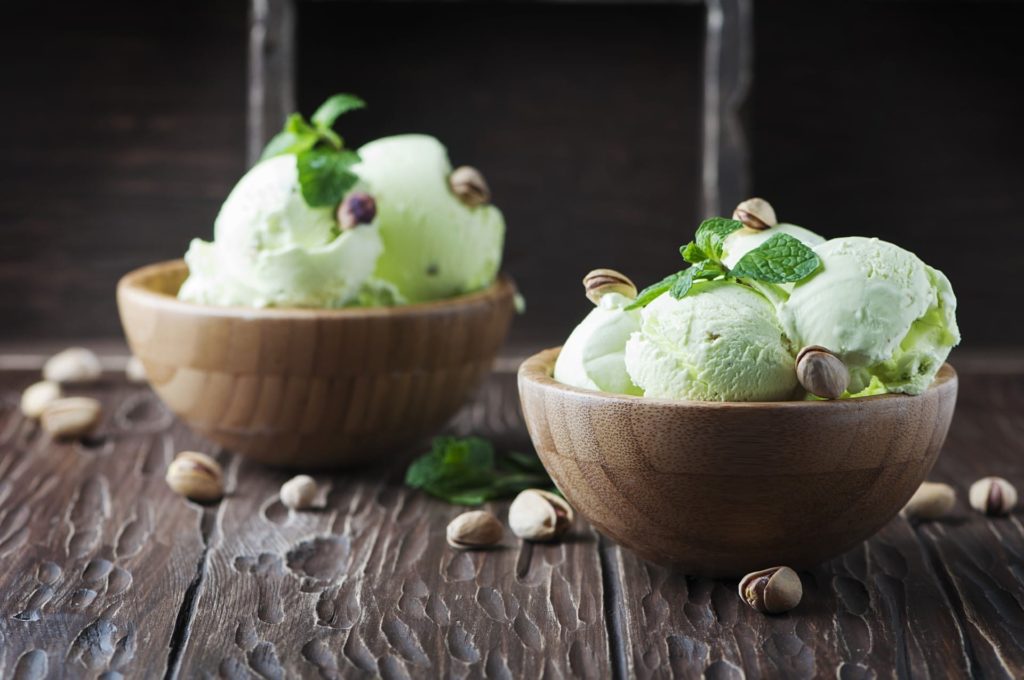
Why sometimes ice cream can be better than potatoes! ; )
As far as your holobiome is concerned, sugar isn’t just the stuff that tastes sweet.
Your entire system – all of the magic bugs that make up your body, your muscles, brain, heart and liver, driving all of the trillions of cascading actions that occur every second in your system – needs energy to work. This energy comes from the food you eat.
The bugs in your gut digest your food by mixing it with fluids in your stomach. During this process, sugar and starches in the food are broken down into another type of sugar, called glucose.
The bugs in your stomach and small intestines absorb the glucose, and then release it into your bloodstream. Once in the bloodstream, glucose can be used immediately for energy or stored up, to be used later.
But blood sugar on its own is not enough to make things work. You also need insulin, in order to use or store glucose for energy. Without insulin, glucose just loiters around in the bloodstream, cat-calling and wasting time, good for nothing!
So clever, hard-working little cells called beta cells run a constant monitoring system on the amount of glucose in your bloodstream. They check your blood glucose level every few seconds, and sense when they need to speed up or slow down the amount of insulin they’re making and releasing. Understand, these poor little guys are just trying to keep everything stable. And usually, we don’t make it very easy for them.
How Does the Food You Eat Affect Your Blood Sugar Levels?
Different foods do different things to your blood sugar levels. And most of the food we eat these days dumps huge amounts of blood sugar into your system, all at once.
The Glycemic Index rates different foods according to their ability to raise your blood sugar levels. A low GI rating means that the food only raises your blood sugar levels a little bit. A high GI rating means that the food raises your blood sugar a lot, all at once. The GI index compares everything to pure glucose, which has a rating of 100. Any food with a GI value over 70 is considered high. 56-69 is considered medium, and 55 or lower is ideal.
To understand why this matters so much, imagine that you’re making a fire in the fireplace, using only newspaper. What’s going to happen?
It will all flare up with a huge, bright whoooosh – and then fade right down, and drop you flat. That’s what happens inside your system when you eat something that is “high GI.”
When you eat high GI foods, the glucose level in the blood soars, and the beta cells trigger the pancreas to release a lot more insulin into the bloodstream, to deal with all the blood sugar. Then the excess insulin in your system causes you to crave more sugar.
So you eat more sugar, the beta cells dump in more insulin – and voila, after enough cycles like this, you end up with Type 2 diabetes. Basically, you’ve exhausted your body’s insulin system by causing repeated blood sugar spikes.
But here’s the kicker – it’s not just things that taste sweet that create this cycle. It’s also anything that raises your blood sugar rapidly – and that includes bread, potatoes and rice. Your body burns it up super-quickly, like newspaper in the fireplace.
Why Are White Potatoes Worse than Ice Cream?
In order to work, your microbiome needs to be in “homeostasis.” Remember that word from biology? It means “maintaining a constant internal environment.” This is what your poor, hard-working system is trying to do. Dump a bunch of sugar in there, cause a quick, brief hot “paper” fire that soon dies down, and there’s no way to maintain a steady environment.
Sorry to be the bearer of bad news here. But white potatoes, just for instance, turn to sugar in your system faster than ice cream.
Same for white bread – and wholemeal bread. There’s almost no difference in the rate that you body burns these two items. (I know, seems so wrong!)
Here are the GI ratings for a few common foods:
Glycemic Index Values:
Over 70 – high
56-69 medium
Under 55 – ideal
- White Rice 86
- Brown rice 66
- White bread 71
- Average whole wheat bread – 71
- Pasta (white durham wheat spaghetti) 44
- Boiled white potato 82
- Boiled sweet potato 46
- Boiled new potato 62
- Ice cream 57
- Lentils – 29
- Chickpeas – 10
- Hummus (chickpea salad dip) – 6
- Oatmeal (rough cut) – 55
What Can You Eat to Help Your Good Bugs?
So, if eating bread, rice and potatoes are like burning newspaper in our system, causing a big whoooosh of blood sugar and de-stabilising our microbiome, what the heck are we supposed to eat?
Think slow-burners.
What we want is to build our fire with wood, not newspaper. You’re after things that will burn slowly inside your system, keeping it ticking over. It’s the abrupt surges in sugar – the big newspaper-burn flares – that upset your system and disrupt your microbiome.
Think oatmeal. Think barley. Anything you have to chew a lot! Think healthy fats, eggs, cheese, pasture-fed butter. Think Ezekiel bread (made with barley and lentils.) Rye bread is ok, and rye crackers are good. Pulses are good. Good fats are good. Protein is good. Fruit and veg is good. Pasta – surprisingly, is pretty low GI! It has to do with the physical organisation of the starch granules in the pasta dough.) But keep pasta al dente, and don’t over-consume it.
Love potatoes? Choose sweet potatoes, which oddly have a score of 48. Seems like “sweet” would translate to higher blood sugar, but it doesn’t! New potatoes sneak in at 54, which still handily beats a boiled white potato at 82.
The good news for potato lovers is that a new potato salad made the day before, tossed with a vinaigrette dressing and kept in the fridge will have a much lower GI than potatoes served steaming hot from the pot. There are a couple of simple reasons for this. The cold storage increases the potatoes’ resistant starch content by more than a third and the acid in the vinaigrette whether you make it with lemon juice, lime juice or vinegar will slow down the process.
One killer that we often think of as healthy, is commercial fruit juice. Fruit juice -with the pulp removed – burns in your system very quickly. So don’t juice your fruit – blend it! Whizz up a piece of fruit in the blender or nutribullet and drink with the pulp included – it will burn inside your system much more slowly.
Avoid honey, except for medicinal purposes. Honey is nearly the same on the Glycemic Index as pure glucose.
Kefir helps your body to process sugar – it has been shown as effective for preventing and delaying the onset of diabetes, and reducing the inflammatory response in diabetes. 1
So, what does all this have to do with your eczema?
Everything! Remember, your skin is a mirror of your gut. Too much sugar kills off the good bugs in your microbiome, and that means too much systemic blood sugar, not just the sweet white stuff.
De-stabilise your microbiome, and the results will map onto your skin. You want to eat things that will slowly trickle blood sugar into your system, keeping your microbiome platform steady and secure. What you want to avoid is things that wobble your microbiome platform, causing general panic and upheaval inside your system!
Your skin will thank you.
















